Navigation auf uzh.ch
Navigation auf uzh.ch
While coal once used to make South Wales the centre of the steaming world of industrial modernity, nowadays the shut-down collieries only serve as touristic remnants of the country’s past. But South Wales is still dependent on heavy industry – namely the Port Talbot steel plant owned by Tata Steel: A landmark that could be described as a prime example of the “industrial sublime”, with all the power and destruction this term implies.
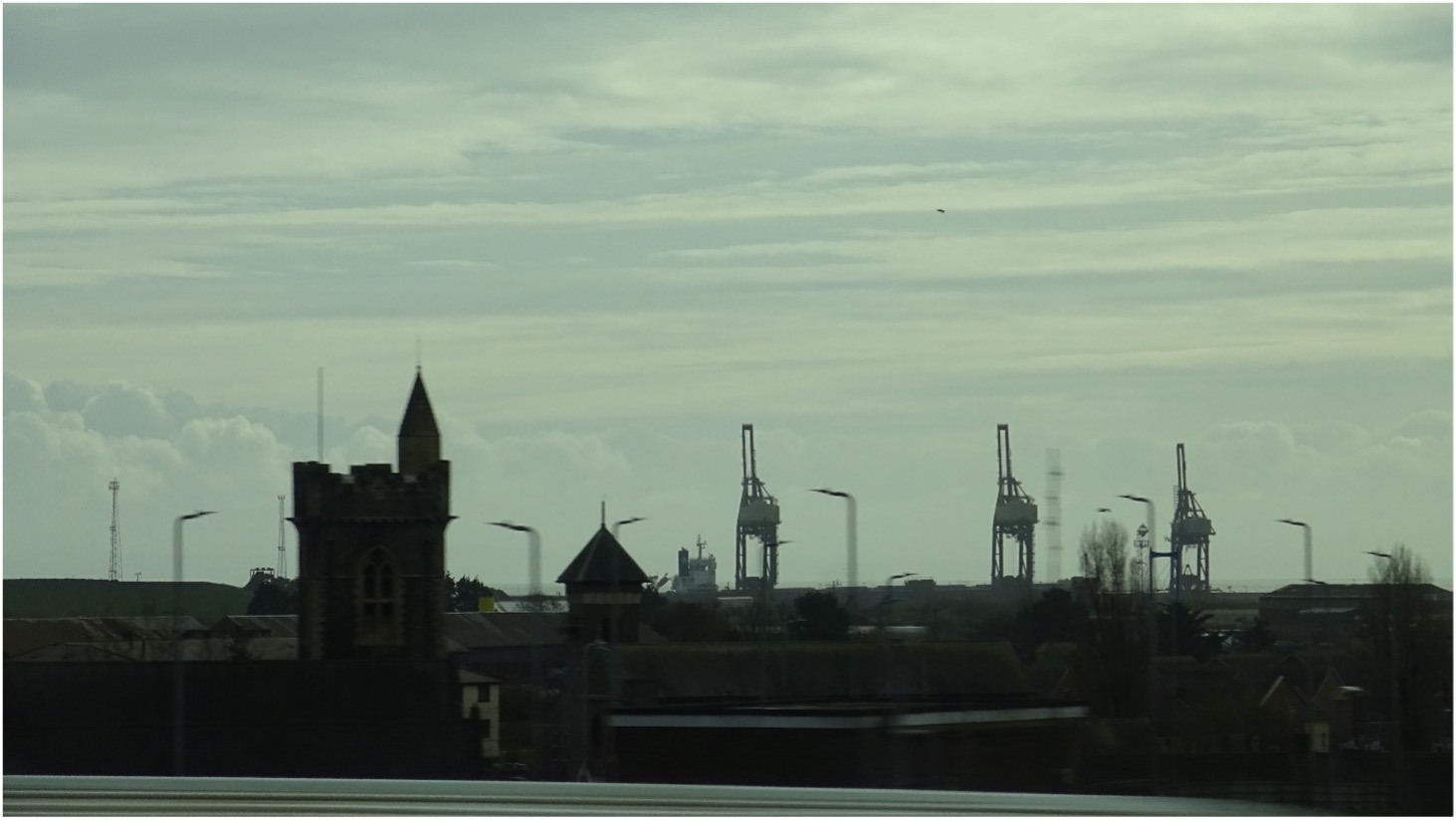
Figure 1: Photo by author.
After riding the bus from Cardiff further into Wales, through the dull landscape of the motorway, I was anxiously awaiting the coastline to appear as it did when I was vacationing with my family in Italy. My expectations of a romantic, rugged Welsh coastline with a stormy sea and potentially a castle in the distance remain unfulfilled. Instead, peeking through a lightly wooded forest patch, we could make out the skyline of Port Talbot. In the distance, huge metal constructs appeared: The steel plant, “Tata Steel”, loomed over the town like a fortress or a science fiction space colony. Thick smoke was rising from the site into the rainy sky. The coastline in the background lost its magic once the menacing industrial complex dominated the view. Equipped with a camcorder, I desperately tried to photograph and film the spectacle – I failed, but still managed to capture a glimpse into the scenery.
In preparation for this university excursion trip, we read articles, held presentations, and did readings on history, social context, politics, and current events in South Wales. A major topic which emerged in the planning phase was the history of (de)industrialisation of Wales. Today’s workers’ protests at Tata Steel reminded us of this: the international, India-based steel company is planning to make 2’800 positions redundant in the course of 2024. This is due to a restructuring of their production globally: According to this plan, the production in South Wales will shift to “green steel”, while the – still growing – production of “non-green steel” will be carried out in other countries such as India and Thailand. Since the overall theme of the trip was the (de)industrialisation of the region and its contemporary resonances, we followed this rupture and what it may mean for people living in the region. We got the chance to visit the factory itself under the supervision of a retired manager – an extensive tour through the whole complex. Furthermore, we had the opportunity to conduct an interview with a worker and spokesperson for the union strike, which was held in a local pub.
As often is the case, once entering a new field for cultural research, said field begins to show its effect on would-be researchers. In the following paragraphs I will attempt to convey the feelings evoked by the steel plant in connection with the power it holds over the area. To do so, I draw from aesthetic theory – more specifically, I use the concept of the “industrial sublime”. It is commonly used to describe the impressions that industrial sites make on observers, from an aesthetic point of view. The artistic tradition of depicting the “industrial sublime” dates back to the early 20th century with artists like Colin Campbell Cooper who tried to capture the rise of a metropole like New York City. Fritz Lang’s Metropolis and many other forms of artistic media attempted similar feats. There was always an ambivalence that was felt in this gigantic “transformation” of the “machine age”: It wasn’t just civilisational progress and splendour, but also people getting exploited, maimed and killed so that industry could function.[1] To better describe and subsequently analyse my experience at Tata Steel, I want to briefly look at some theoretical foundations of the concept of the “sublime”.
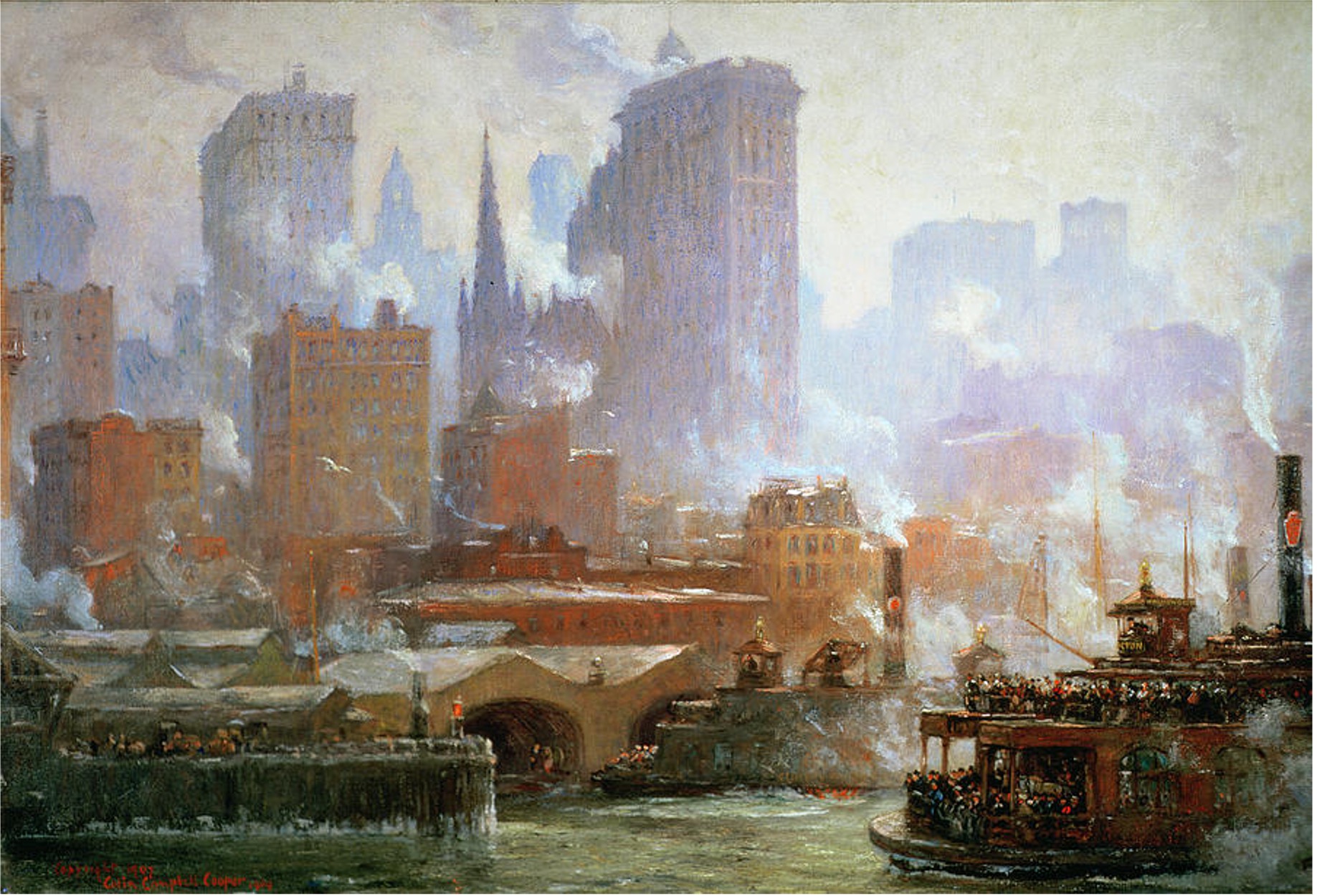
Factories, grand like temples, monstrous machinery that has its jaw locked into the landscape, and blast furnaces still glowing in the dark like volcanos. And there we stand, human spectators, unbelievably small and fragile in comparison to the “industrial sublime”.
What truly makes this “sublime”?
“Sublime” (erhabene) phenomena cannot be fully understood by classifying them as “beautiful”, although the experience of being exposed to them is genuinely aesthetic. This might sound confusing, because the term “sublime” is commonly used to describe something that is “awe-inspiring”. The “fear and terror” the “sublime” also invokes seem to get lost in the everyday usage of the term. If we want to understand the Welsh industrial landscape as something “sublime”, we need to look at the historicity of the concept. Essential readings would be Edmund Burke, Immanuel Kant and Theodor W. Adorno. In the tradition of Burke’s 18th century Romantic view, the “sublime” is characterized as something that entails discrepancies and contrasts. He describes the grand and beautiful but simultaneously menacing experience while e.g. looking at a cathedral or a natural spectacle such as a stormy sea. The convergence of marvel and a threat is key to understanding “sublime” phenomena.[2]
Kant took the concept further: He moved away from the ‘form of the phenomenon’ and put the human ability ‘to distance oneself and reflect on nature’ in the centre of his argument. The fact that we can reflect on a natural disaster and see its beauty while also acknowledging its destructive force, places the human mind at the forefront of the “sublime”.[3]
180 years later, Adorno moves the object of interest of the “sublime” away from “nature” and to the “arts” and the “avantgarde”, such as expressionism. He criticises a conservative aesthetic theory that praises the “beautiful” and tries to mimic nature. His focus lies on the unsettling feeling that may be evoked by looking at specific pieces of art – potentially an existential experience, reminding spectators of their own “subjectivity” i.e. their own “nature”.[4]
I am citing these theories to illuminate my experiences and observations of the industrial area in Port Talbot and the history of South Wales. To me, Tata Steel’s gigantic industrial complex represents the beautiful-threatening aesthetics of a sublime factory. This was an experience that left a deep impression. But clearly, this perception also depends on the visiting observer. If, for instance, you grow up in an area where “sublime” landscapes are constantly present, or are working in a factory yourself, you might not think of it as “sublime” – but rather as a workspace in your everyday life. Also, "danger” will have a different meaning.
Riding in a minibus through this scarred landscape with its own ecosystem created a peculiar atmosphere. The sun was heating up our bodies in our blue workwear, the use of which we were meticulously instructed about beforehand. We looked out of the bus window and made out red, iron-coloured earth piling up into hills, slowly overgrown by local flora. Black, muddy waters near the coastline, machinery and pipes, rugged streets and heavy vehicles, black and white smoke rising in the sky and most of all: almost alien-looking buildings whose use we initially knew little about. Some had huge sets of metal stairs on the exterior as well as on the interior, others had no visible windows.
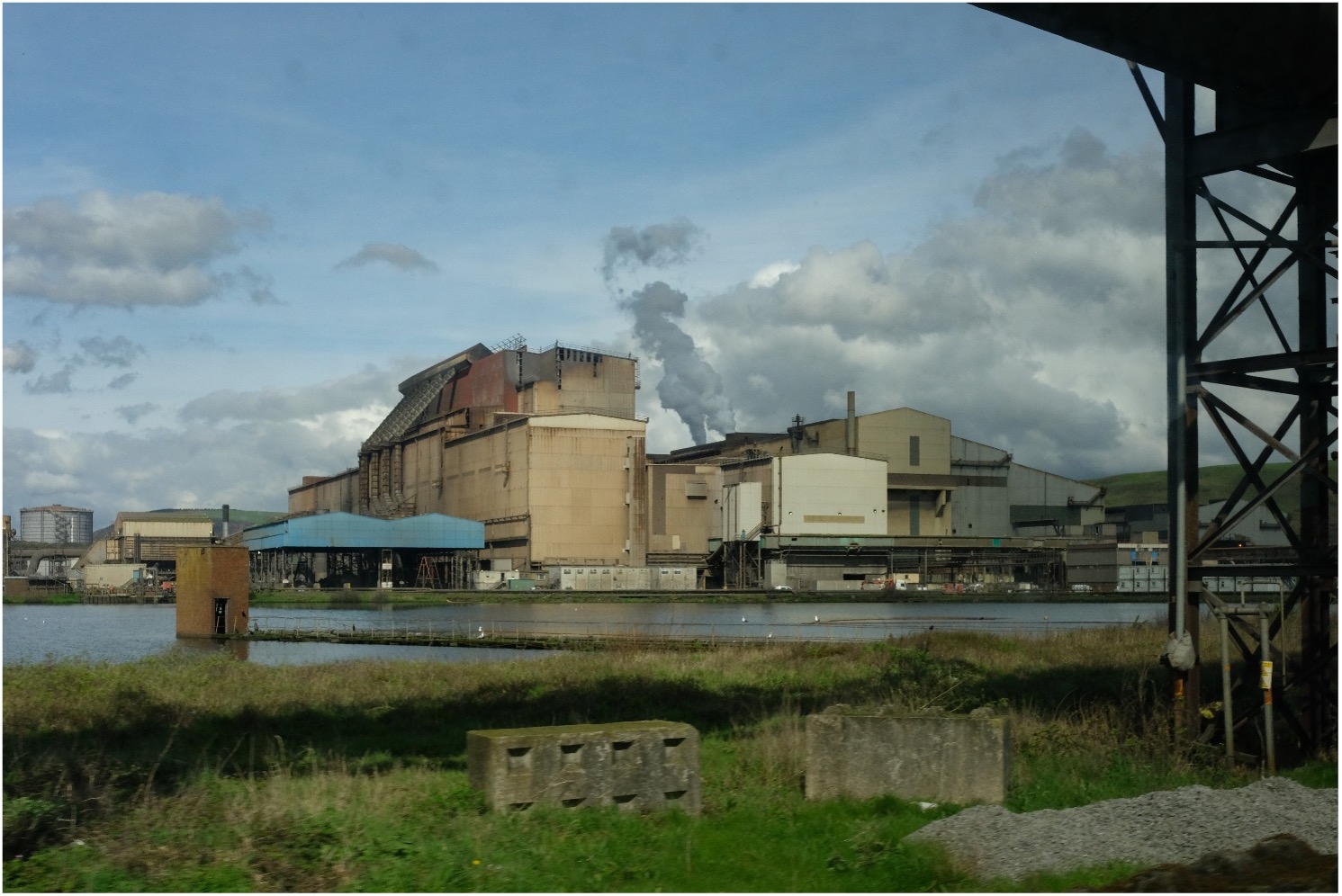
Rust and iron particles followed us everywhere, we breathed them into our lungs while visiting the infrastructure. During our guided tour, we were told that photography was prohibited. This rule was most likely due to the possibility of exposing confidential information. Nonetheless, this – softly enforced – interdiction made the act of looking at the site even more intense. Additional warnings about potential dangers, as well as stories read and heard beforehand of people getting hurt or even dying on the site in work accidents also did their part in intensifying the danger felt during the visit. Looking at these structures with Burke’s theory in mind, the visit was surely full of contrasting and extreme impressions.
On the outside, the complex was illuminated by warm sunlight. It stuck out of the landscape like a sore thumb. I thought of it as “nature” and “culture” clashing. The factory was also, oddly, mirroring its environment with its rusty earth tones. Still, the factory turned the nature that it is surrounded by into something hybrid – something that could be described as “industrial nature”. Machinery was towering over the natural world, slag was seeping into it. Inside the buildings, we found ourselves in vast, hangar-like halls – sometimes filled with intricately automated assembly lines, moving platforms, huge gears turning or stacked full of steel coils. The environment was uniquely formed by extreme heat and humidity, splashing water and cranking systems. It also seemed almost empty of people – only here and there a worker was interacting with the machinery. This shaped the backdrop of us walking through tight corridors, up and down staircases and across vast halls. In some buildings, brutal-looking machinery appeared as if it would easily harm anyone nearby if something were to go wrong. Our bodies covered in workwear, neck covers, and flimsy helmets gave the impression of “safety”, however, they likely wouldn’t have protected us from unforeseen accidents. The guide told us that he has been to less safe factories, where the thin steel strip was not guarded by a fence and could easily “cut you in half” if something were to go wrong. From time to time, we heard alarms calling through the spaces, saw different coloured lights illuminating the walkways and workers moving about. Our guide was always on guard – we were in his care.
The architecture of the buildings made us feel small and insignificant in comparison to the grand halls and machinery. The halls reminded me of sacred spaces like cathedrals, but also brutalist, even fascist architecture – or the real-world blueprint for spaceship hangars in a Star Wars movie. A fascinating, fear-invoking production site that we – contemplating Kantian spectators – could observe from a distance, not necessarily in a physical sense, but through our detachment from the processes of work and production.
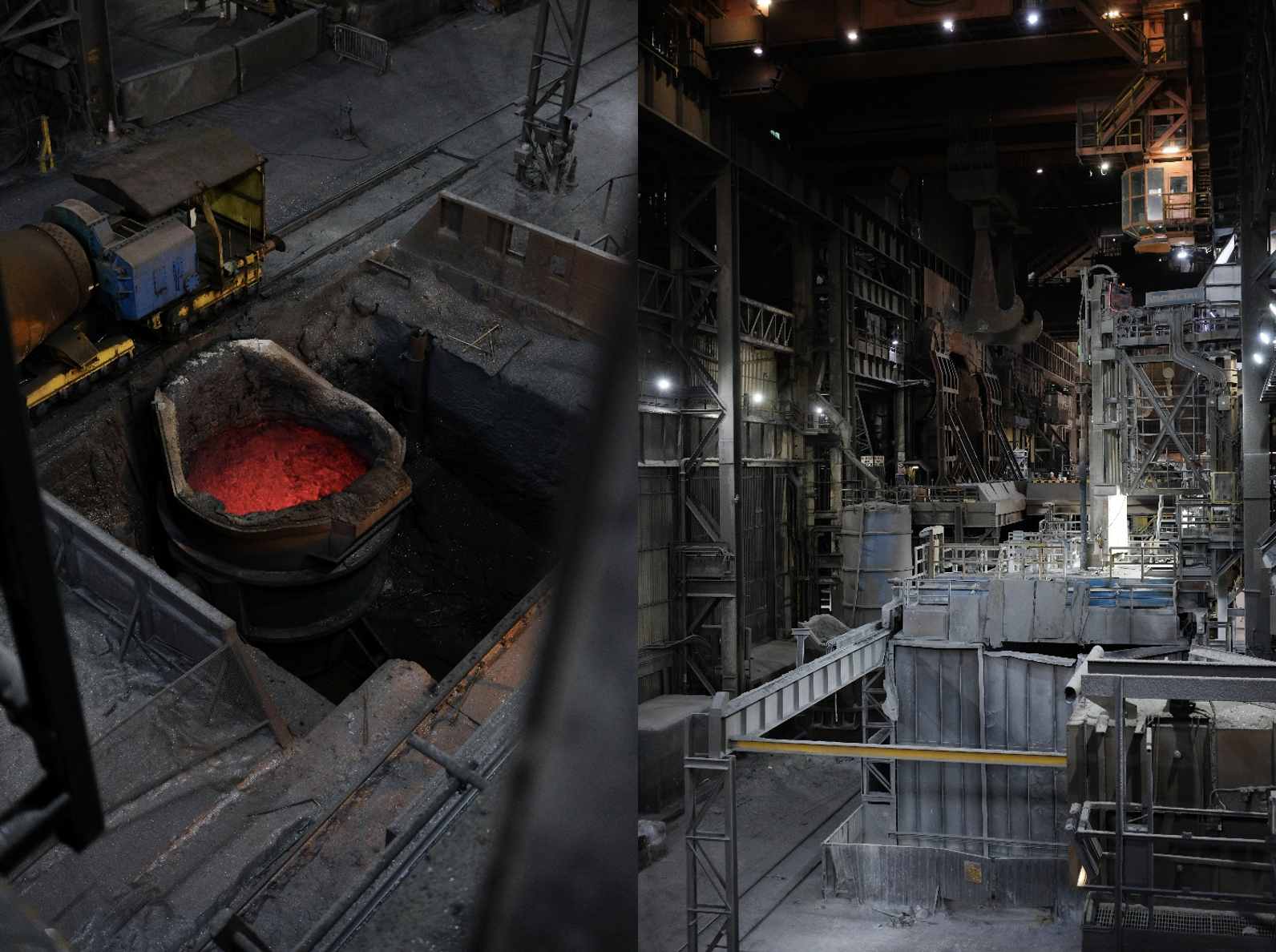
Meanwhile, from up close we could observe little iron particles that formed a glinting “fairy dust” on the railings. It almost felt out of place in that harsh environment.
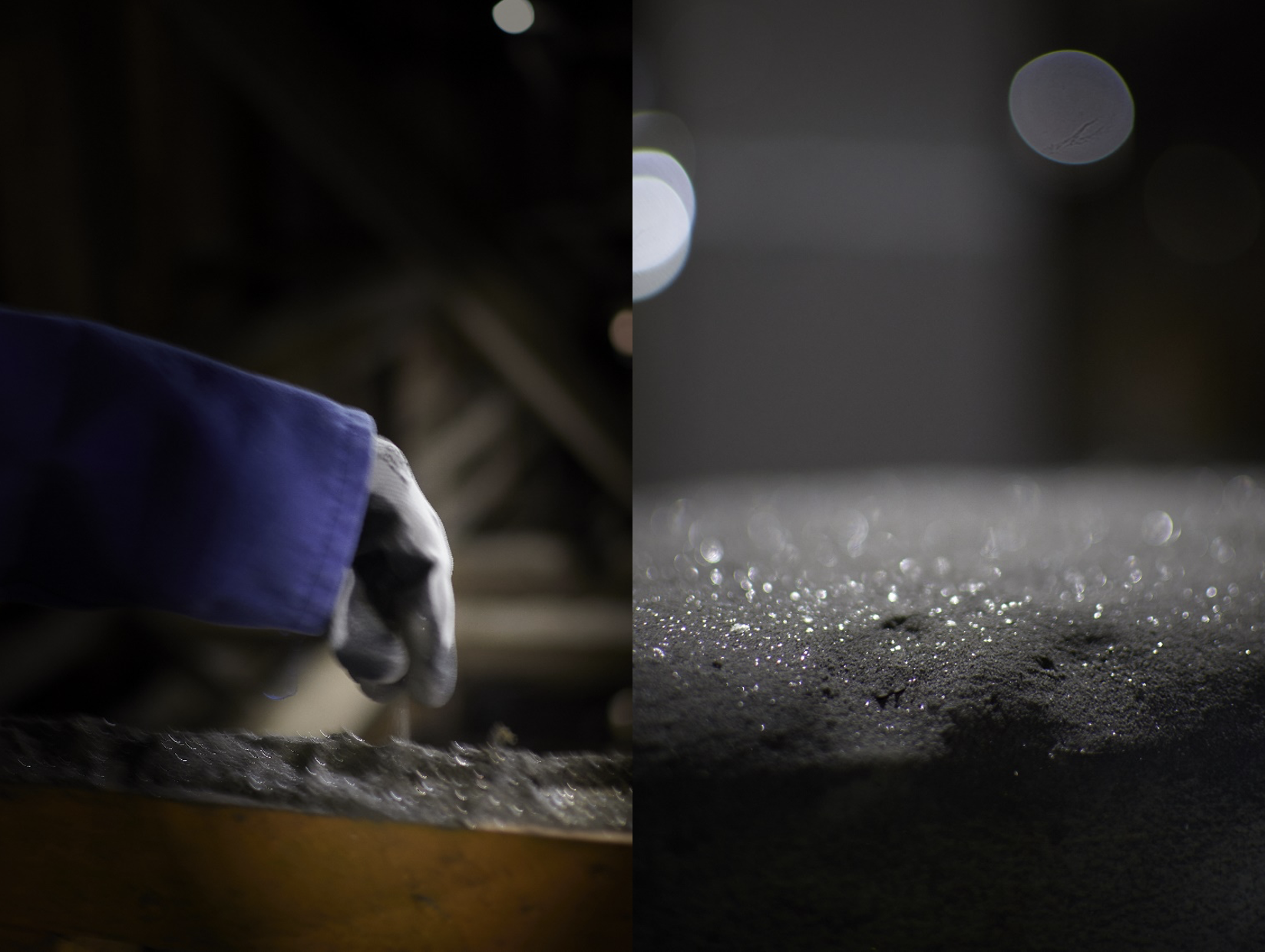
I want to go back to Adorno’s understanding of the sublime and thereby discuss another aspect of the factory’s effects on my experience. To do so, it helps to take a step back and contextualise industrial production a bit more. What makes it “sublime” isn’t only the immediate marvel and our contemplation, but how we ourselves are situated in a larger context – the way in which we as students or “academic subjects” might feel while witnessing industrial production. To me, it is also the global power and dominance of capital that radiates from these structures – and with that economic might on the one side, comes danger, precarity and crisis for others, on a local, national and global level.
The 19th-century industrial revolution brought both the promise of wealth and its destructive consequences. Technological advancement came hand in hand with pollution of the natural world and exploitation of the working-class. But the highly automated production at Tata doesn’t require as many workers as factories used to in the 19th or even the mid-20th century. The immense volume of production, while less and less people are employed, and capital searches for ever more profitable investments, is a reminder of the might of the market. The drive for profit also means that whole communities can be made redundant – the person behind the machine, whether thought of as a worker or human capital, is an easily replaceable cog in the machine. The factory thus also represents the sublime, invisible grip of the market’s hand on society.
The present moment could be described as a conflux of crises. Port Talbot is affected by many of them: the local cost of living crisis and the exploitative nature of global capitalism, industrial pollution, impending climate catastrophe and the seemingly progressive answer to it in the form of “Green Steel” all loom over the city. They are palpable – horrors, as it were, that are part of the “industrial sublime”. Further de-industrialisation of Wales will leave the country in an even more desolate state than before.
Is there any hope left? After our insightful conversation with the union spokesperson Jason Wyatt, it certainly seemed so. He radiated hope in the cause, in unionising against the employer and working towards better conditions. His words in mind, I think he would probably agree that this resistance can be seen in a longer chronology that includes the famous miners’ strike (1984/85) at a time in which Welsh towns were dependent on the collieries as the main source of income.[5]
But it also became apparent that this resistance today has its bitter notes, as did the older one, which had culminated in defeat. Many workers of the steel plant today, as Jason Wyatt elaborated, were individualistic and depoliticised. Some had gotten a decent severance package from the firm upon leaving it and saw no reason to join forces with those who were still fighting. The strength of the community may be a myth at this point. On the other hand, it is not yet clear if this struggle will create new energy.
In what way can the Tata Steel factory complex be elucidated by the concept of the “industrial sublime”? From an aesthetic perspective, the factory evokes fascination and a sense of danger upon looking at it as an object of inspection. From a more abstract point of view, the steel plant embodies the power of industrial production, global capitalism, economic power and people’s dependence on it. But it also represents the damage it has inflicted and continues to inflict on the natural world, Welsh communities and their individual life stories. So, in a sense, this industry is sublime – with all its grandiosity and terror.
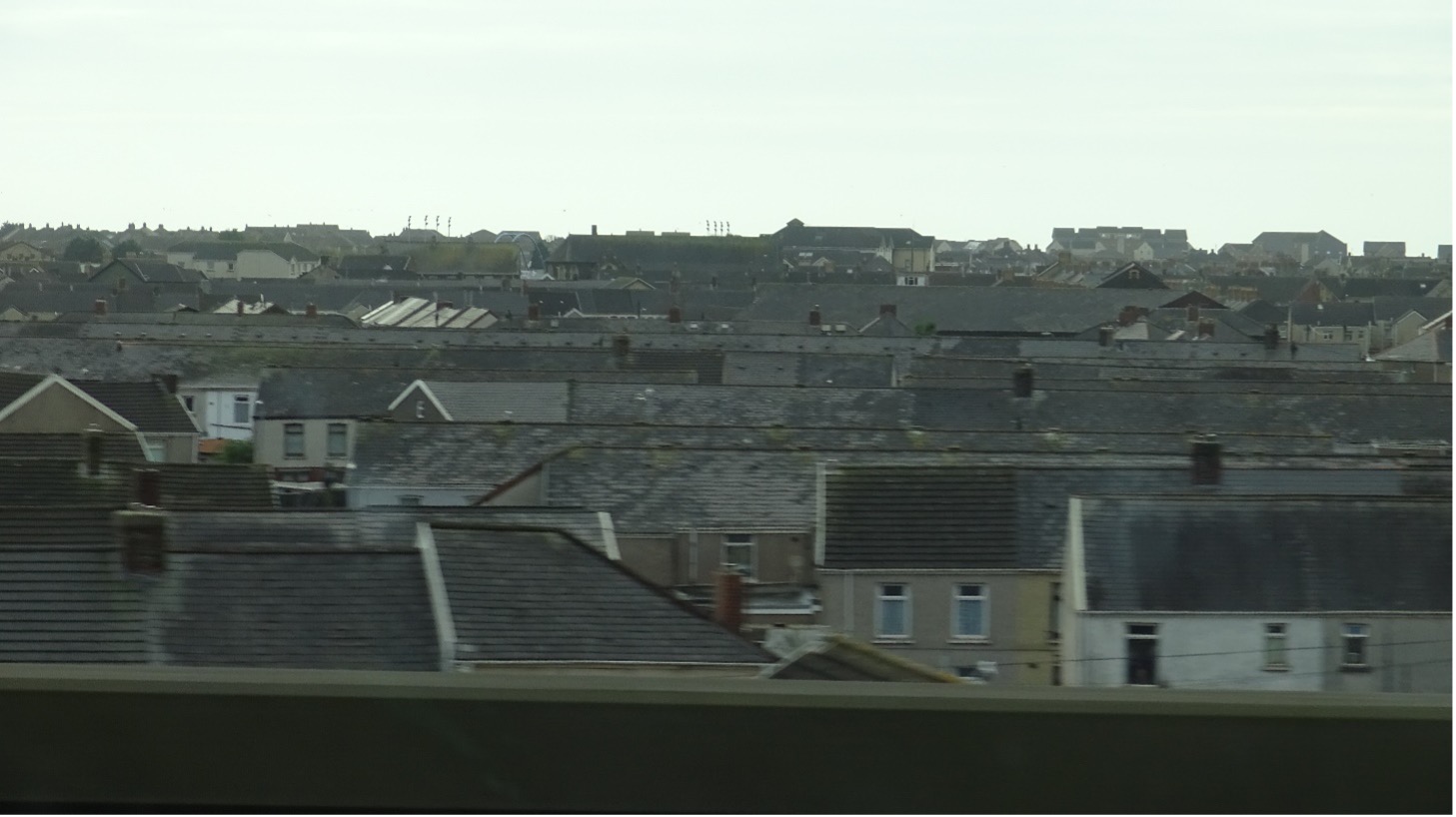
[1] Shapiro, Michael J. 2018. The Political Sublime. Durham: Duke University Press.101–132.
[2] Burke, Edmund. 1989 [1757]. Philosophische Untersuchung über den Ursprung unserer Ideen vom Erhabenen und Schönen (orig. engl. A Philosophical Enquiry into the Origin of Our Ideas of the Sublime and Beautiful). Hamburg: Felix Meiner Verlag.
[3] Kant, Immanuel. 2009 [1790]. Kritik der Urteilskraft (engl. Critique of Judgment). Hamburg: Felix Meiner Verlag.
[4] Adorno, Theodor W. 1970. Ästhetische Theorie (engl. Aesthetic Theory). Frankfurt am Main: Suhrkamp Verlag.
[5] James, Leighton S. 2020 [2018]. Mining memories. Big Pit and industrial heritage in South Wales. In: Industrial Heritage and Regional Identities, ed. by Christian Wicke, Stefan Berger and Jana Golombek, 13–31. Routledge.
Andrea-Luca Bossard